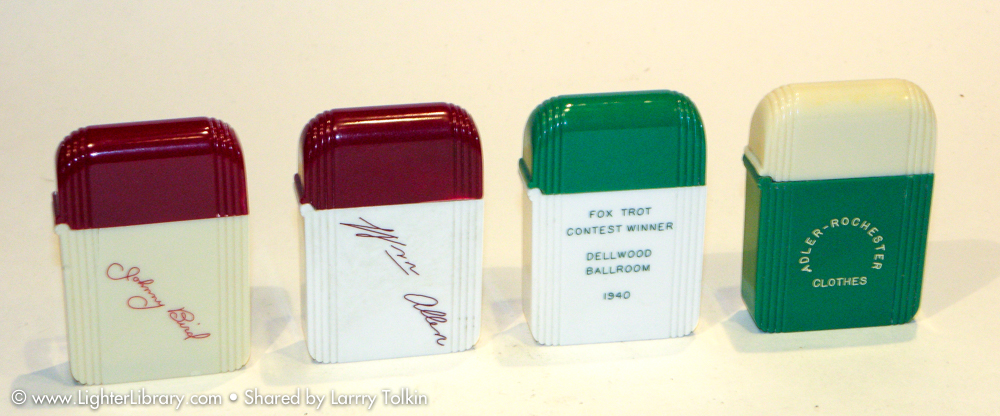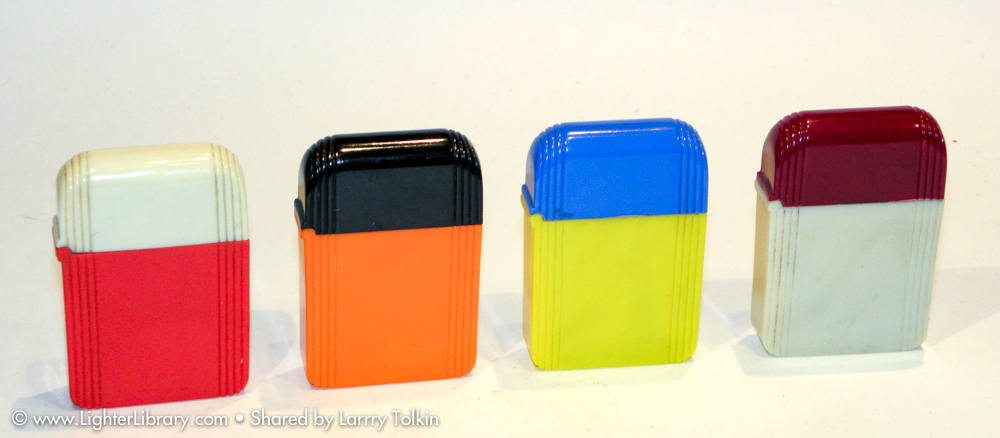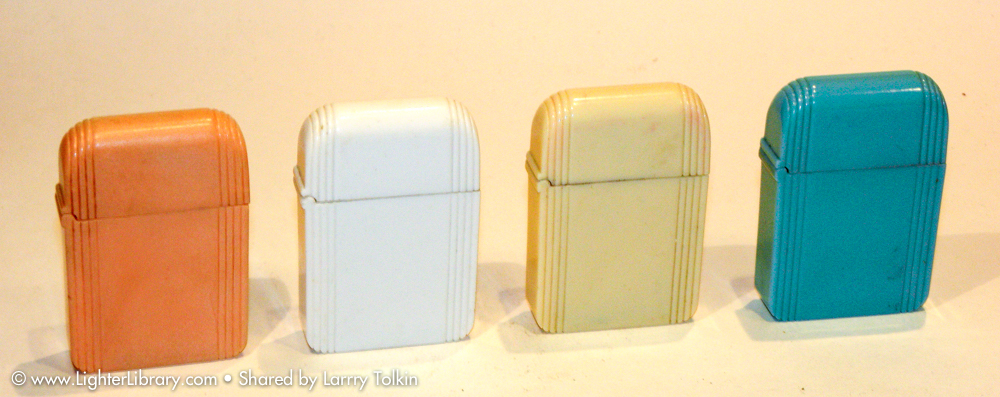New Method manufactured self starting catalytic lighters starting about 1930 in Bradford - in 1935 imported the “presto” side press automatic lighter from Arthur Dubsky of Austria - and in 1938 introduced the “helios” - possibly trying to mimic the success of the Zippo windproof cased model. The “helios” however was a fashion brand lighter with its streamline modern airflow speed line design on each side and availability in numerous different colorways. The 16 slot windscreen insert is mostly found chrome plated and on occasion in steel alloy. There were 15 solid colors as shown in the instruction sheet and when you mix and match – there are 225 total colorways.
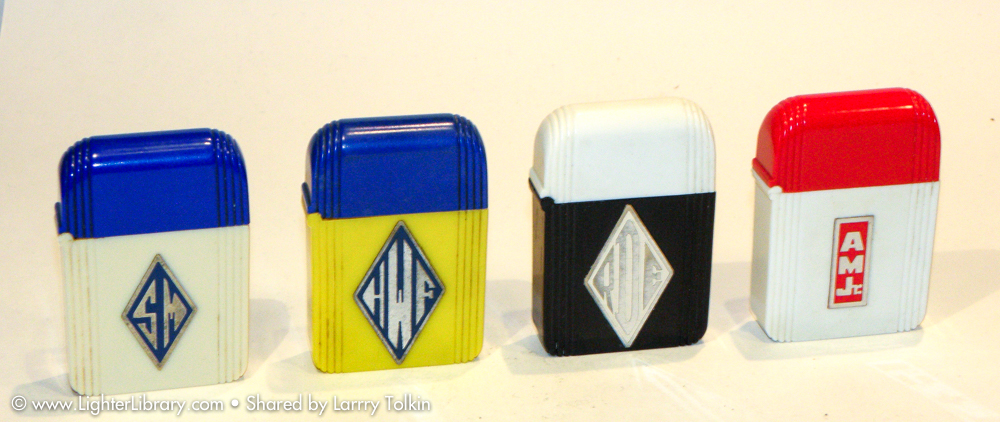
The “Helios” case was first designed by Joseph Federico in 1938 and patented in 1939. The “helios” utilized an unusual pinless internal hinge rather than external or internal pinned hinge. The unusual circular arc hinge was invented by the Merrill Rathbun company in 1931. Rathbun manufactured plastic boxes utilizing the hinges. Some “helios” lighters are marked with the Rathbun patent number inside the case. The lighter cases were made in Salamaca, New York of colorful molded beetle plastic resin. Beetle is a plastic product with similar properties to bakelite so calling the “helios” bakelite is a-ok. Beetle resin was manufactured by the American Cyanamid Corporation and was also used to make radios – dinnerware – ping pong balls – and many other consumer items or as trim.
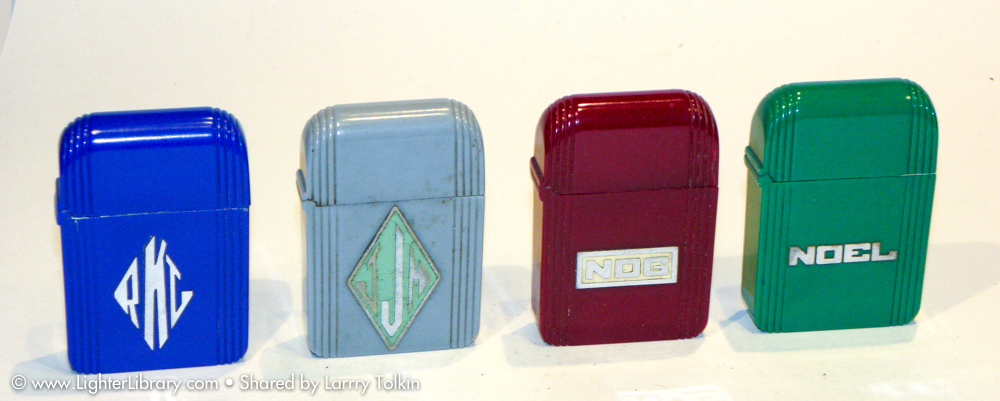
As a note - The Salamanca company was part owned by Howard Ellis who later manufactured the 1940’s Ellis catalin table model in Buffalo, New York.
The “helios” lighter measures about 2-1/8" tall x 1-3/8" wide and the windproof insert mechanism pulls out to fuel and flint. The “helios” was also manufactured in New York City using pressed anodized aluminum and likely lost a trademark infringement lawsuit case as the name became “hurricane”. The “hurricane” model is only known in a few colorways and has a circular hole windscreen design.
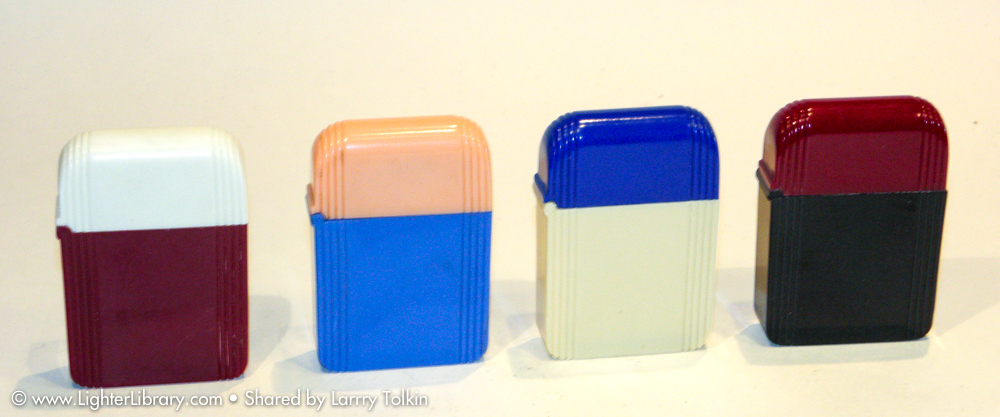
The “helios” lighter had options of added enamel metalliques with either advertisements or initials. These were the same metalliques used by Zippo. With so many color choices – a customer could order “helios” lighters to match their company logo colors as seen with Texaco and the Yale bulldog lighters. The “helios” case could also be engraved with signatures or ads.
Now is the time to become “color crazy” when you start your 1938 “helios” lighter collection. Please feel free to contact me with any additional information you have concerning the “helios” art deco lighter.
(LT)
